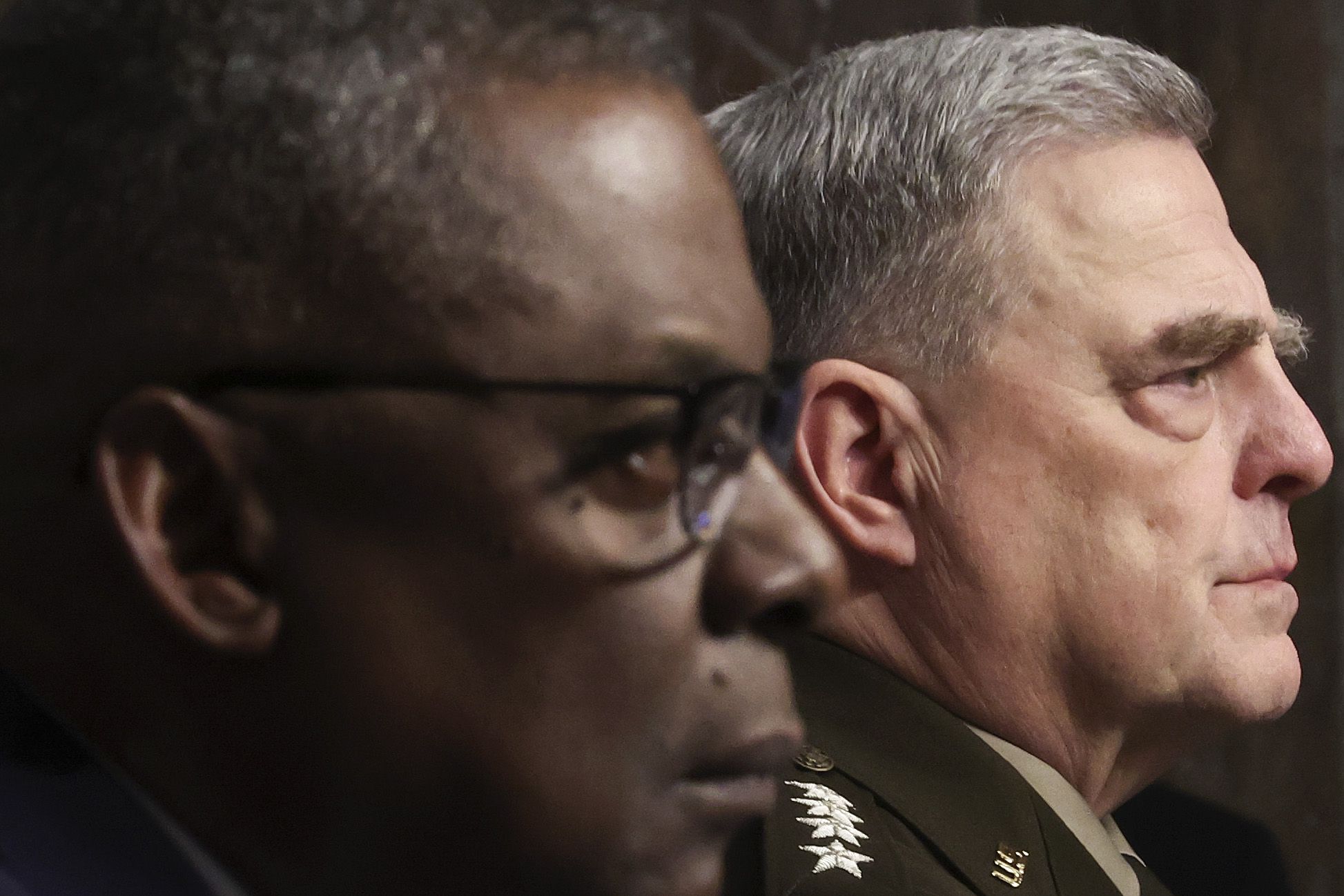With Washington’s partisan politics growing arguably fiercer, military leaders have to figure out how to defend their policies and people without appearing to take a side, a group of longtime D.C. policy hands said Tuesday.
“It is impossible to be a leader of an organization and not be a political actor,” American Enterprise Institute’s Kori Schake said, at the Center for Security Studies conference Tuesday at Georgetown University.
Military leaders have to be able to build coalitions, advocate for their causes, and know “when to hide behind your civilian superiors and when to step forward and take a hard question for them,” said Schake, AEI’s director of foreign and defense policy. “That’s political activity. That’s not scary. And in fact we should want our military leaders to have that.”
The debate over how to navigate politics while serving in uniform stems from an uncomfortable new reality that senior officers frequently find themselves in the crosshairs of competing political factions.
Witness how the military has gotten dragged into a number of partisan fights over the past few years, from Trump’s infamous walk across Lafayette Square with Pentagon leadership to the saga of now-retired Maj. Gen. Pat Donahoe and his attempt to stand up to Tucker Carlson’s misogynistic takes on women in the military.
The awkward and cringeworthy public moments, especially when top officers are used as political punching bags in open hearings, seems to have dented the public’s trust in the military, according to last year’s Reagan National Defense Survey. Respondents pointed to the perceived politicization of the organization as a reason for their declining confidence, from over 70% down to around 40% in recent years.
Partisan feelings also factored in, with conservative-leaning respondents citing so-called “woke” policies like renaming of Army posts to remove Confederate-era monikers, while more liberal participants were concerned about infiltration by right-wing extremists.
Schake offered some quick but likely controversial fixes to tamp down on rising politicization, such as suggesting that Congress ban outlets like MSNBC or Fox News from playing on TV’s in communal spaces on military installations.
And she said Congress could get its own house in order, by ceasing the practice of treating uniformed leaders as stand-ins for the White House. She suggested congressional committee leaders could block or exclude fellow lawmakers’ inflammatory political questions of military leaders in open hearings.
And the leaders themselves could be more savvy. Schake felt that Army Gen. Mark Milley, chairman of the Joint Chiefs of Staff, should have deferred to Defense Secretary Lloyd Austin last year when asked whether critical race theory was being taught at the military academies.
RELATED
:quality(70)/cloudfront-us-east-1.images.arcpublishing.com/archetype/X5ADIFSZMRF25IAOFPXB7YX3JQ.jpg)
Bishop Garrison, who headed up DoD’s diversity, equity and inclusion efforts in the first 18 months of the Biden administration, countered that there can be a time and place to wade in.
“When something like CRT, critical race theory, is lobbed out there and used clearly in a partisan manner to have some type of divisive effect, I think it is important from a leadership perspective for our most senior leaders, when it is addressed to them, to engage in these types of conversations,” Garrison said. “We can argue on the edges about whether he went too far … but I think actually the engagement itself in that manner, on that stage, is important for us right now.”
It’s also important for leadership to stand up for its people when they’re attacked, Schake said, even if the discussion is hyperpartisan.
The Army found itself in a public relations quagmire last year when it investigated the commander of Fort Benning, Ga., now retired Maj. Gen. Pat Donahoe, for some of his social media activity.
Donahoe had tweeted his objection to comments by Fox News host Tucker Carlson, who had railed against the Air Force’s fielding a maternity flight suit.
“So we’ve got new hairstyles and maternity flight suits,” Carlson said, also referring to recently updated Army and Air Force hair regulations authorizing braids and ponytails. “Pregnant women are going to fight our wars. It’s a mockery of the U.S. military.”
RELATED
:quality(70)/cloudfront-us-east-1.images.arcpublishing.com/archetype/GCATV2RJ4ZGKJLYWKQ4GCKPCSQ.jpg)
Donahoe avoided any disciplinary action, and many in the military community rallied behind his defense of women in uniform, but the Army’s lesson learned was that soldiers should avoid publicly engaging America’s ongoing “the culture war”.
“The institution looked at it as a senior military leader engaging in a partisan spat on social media with a major media figure,” which would necessitate imposing new guidelines on Army-wide social media behavior, Schake said.
But the need for those guidelines has been growing for some time.
“We’re in an environment where things that people say — including things that the [chief of staff] and I say — can be taken totally out of context,” Army Secretary Christine Wormuth said in October. “I think it just demonstrates that difficulty, frankly, of being in the public arena and not being accused of taking a partisan side.”
But that shouldn’t mean ducking out of political conversations altogether, offered Heidi Urben, a Georgetown security studies professor and retired Army colonel.
“There’s danger in the military construing nonpartisan as seeking out a mythical equidistant point between the two parties ― that doesn’t exist, first of all,” she said. “And trying to occupy ground that is deemed to be inoffensive to either party. Because when one party moves to an extreme, that equidistant point moves along with it.”
Nonpartisan, she added, doesn’t necessarily mean bipartisan and agreeable to both sides ― it means not favoring one or the other.
Meghann Myers is the Pentagon bureau chief at Military Times. She covers operations, policy, personnel, leadership and other issues affecting service members.

